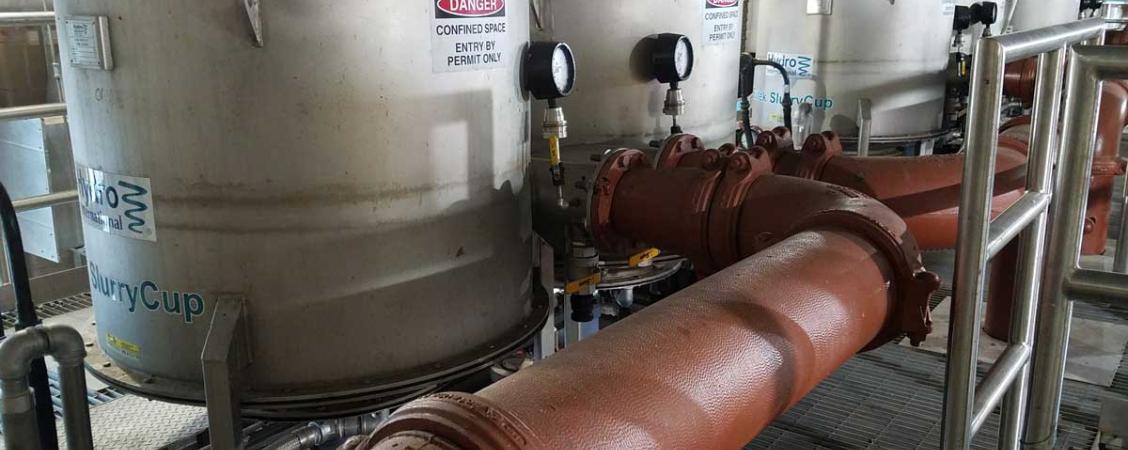
Sludge degritting protects award winning plant
Lorton, VA Deploys SlurryCup™ / Grit Snail® to Protect Mission Critical Sludge Treatment Processes.
The Situation
The Noman M. Cole, Jr. Pollution Control Plant (NMCPCP) provides an innovative solution to a complex problem. The plant’s 19 consecutive years of Platinum Peak Performance awards from the National Association of Clean Water Agencies attests to NMCPCP’s rigorous environmental standards. Fewer than a dozen of America’s 16,500 wastewater treatment plants have won this prestigious award. Located in Fairfax County, Virginia just west of Washington DC, the plant discharges into a tributary of the Potomac River which supplies drinking water for most of the 6 million people living in the DC area.
Water Reuse & Energy Recovery Leaders
In addition to traditional wastewater treatment, the plant has a robust water reuse program. The plant initially treats water to a level that is suitable for use in irrigation and industrial applications. Additionally, 2-3 Mgal/d (7.6-11.4 MLD) of this pretreated gray water is used by the plant for internal operations.
A pipeline from the plant is sent to Covanta Fairfax, Inc. Covanta Fairfax uses around 560 million gallons of NMCPCP’s reclaimed water to operate the cooling towers at their 80 MW Fairfax energy recovery plant. Additionally, recovered water is used to irrigate the nearby Laurel Hill Golf Course and county parks. Using diverted water for these purposes replaces the need for 400 million gallons (1,514 million liters) of drinking water each year.
The Problem
NMCPCP had no headworks grit removal. An aging cyclone / screw classifier sludge degritting system was ineffective at removing the large amounts of grit in their sludge. Their high-maintenance cyclone / screw classifier sludge degritting system had provided little protection and was nearing the end of it’s usable life.
At this plant, excess biosolids are dried, incinerated, and then the ash is hauled to a landfill for disposal. The grit that their cyclone / screw was failing to capture remained in the ash and was significantly increasing their landfill, handling, and hauling costs and as a result increasing their overall operational expenses.
Cyclone / screw classifier systems are typically only capable of removing grit that is 212 micron and larger. Finer grit particles in the 75-212 micron range were not being removed from the sludge and were impacting downstream sludge treatment processes. Additionally, the cyclone / screw classifier system required frequent liner changes and the associated maintenance / downtime required to replace them was adding up. The plant needed a more robust technology to remove the finer grit particles and reduce their operating and maintenance costs.
The Solution
The plant contacted Hydro International to conduct a field trial of a SlurryCup™ / Grit Snail® Advanced Sludge Degritting system to verify that it could provide the performance they required in this challenging application.
After the resounding success of the field trial, the plant selected six (6) 42” (1.1 m) SlurryCup™ systems and three (3) 2 yd3/hr (1.5 m3/hr) Grit Snail® quiescent dewatering escalators. Installed in 2014, the sludge system has significantly reduced their maintenance and operational costs and continues to protect their mission-critical biosolids operation from the devastating impacts of grit.
System Advantages:
- Over 90% removal of 75 μm particles (2.65 Specific Gravity)
- Removes up to 20 times more grit than a cyclone / screw classifier
- First flush solids handling capacity minimizes grit loss
- Low organic content (< 20% VS) of classified grit, reduces volume going to disposal
- 60% Total Solids content
- Enclosed system improves odor control
- Significantly reduces O&M costs
















